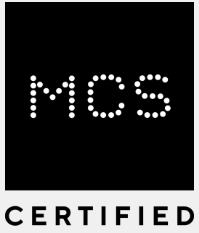A south-facing solar panel on a roof will provide the optimum generation. An East/West array will also provide 70% of the energy of a south-facing roof but will deliver energy from sunrise to sunset.
From between 5 and 8 years depending on the complexity of the installation and how energy is used.
- Inverters and batteries we install are MyEnergi, SolarEdge, Solax, Solis, Puredrive, Givenergy and Growatt.
- Solarpanels: JA Solar, Trina, and Eurener.
- Roof mounting systems: Renusol, Clenergy and K2.
- Ground arrays: Sunfixings
- EV Charge Points: MyEnergi Zappi
Ecovolt will design a bespoke system to reduce ROI by correctly sizing the array, inverter, and batteries. Payback can be reduced further by adjusting your energy use habits, particularly if you charge an EV at home. We can advise you about this.
A professionally installed solar array should be in service for at least 25 years. The inverter contains sophisticated electronics and could need replacing after 10 or 12 years.
Solar panel manufacturers typically offer a warranty of 25 to 30 years. Inverters and batteries usually carry a ten-year warranty. Full warranty details together with extended warranty options will be provided.
A roof-mounted solar array falls under permitted development unless your property is listed or in a conservation area. Flat roof arrays can’t extend more than 20cm above the roof. Ground arrays over 9m2 require planning consent, Ecovolt can assist you with this process.
The inverter converts DC electricity from the solar panels into 230V AC which domestic appliances are designed to run on. The inverter senses the power supply of the property and knows when to charge/discharge the battery. It allows you to monitor the system from anywhere via the Internet.
Solar PV panels generate electricity while solar thermal panels or evacuated tubes harvest heat, typically used for hot water.
Garages are perfect, lofts, cupboards, basements and outbuildings can also be suitable. However, batteries don’t work as well when the temperatures reach freezing.
Certain inverters and batteries are rated to be installed outside if not in direct sunlight with some shelter from the elements. However, batteries don’t work as well when the temperatures reach freezing.
Two square metres with the equipment protruding 30cm from the wall, good ventilation is required in tight spaces.
Energy is measured Watts, k = 1000, p = peak, h = hours battery capacity is measured in kWh.
We are certified by the Microgeneration Certification Scheme (MCS), HEIS for consumer protection including, deposit and workmanship warranty, NAPIT.
- NAPIT - Building control certificate and Electrical installation certificate
- MCS certificate – Required by your energy supplier to obtain payment for energy exported
- HEIS – Independent consumer protection and deposit guarantee provider
Battery cells are the same, the difference is how the batteries are charged.
A DC-coupled battery is connected directly to a hybrid inverter, when the solar array is producing more power than the property requires, DC electricity is diverted directly from the solar panel to the battery. A DC-coupled battery is more efficient than an AC-coupled battery.
An AC-coupled battery is connected independently to the solar inverter and could be installed without solar panels taking advantage of off-peak tariffs and providing backup power during a power cut. AC batteries are a good option for energy storage for an existing solar installation. A Tesla Power Wall is an AC-coupled battery.
All our solar installations have data logging platforms and apps which provide interesting insight into generation and consumption. They will also inform the homeowner and ourselves if there’s a fault in the system. An internet connection is required where the inverter is installed.
Our designers and installers take pride in their work, paying attention to detail, symmetry, and aesthetics. External cabling is run in conduit and we always use flashing glands to run cables from outside to the interior.
If the array serves a domestic residence and is within the curtilage of the property, then the installation is zero-rated for VAT. From the 1st of February, stand-alone or retrofit batteries will be exempt from VAT.
Birds can nest under solar panels which could be a nuisance. We can install bird protection as an optional extra.












